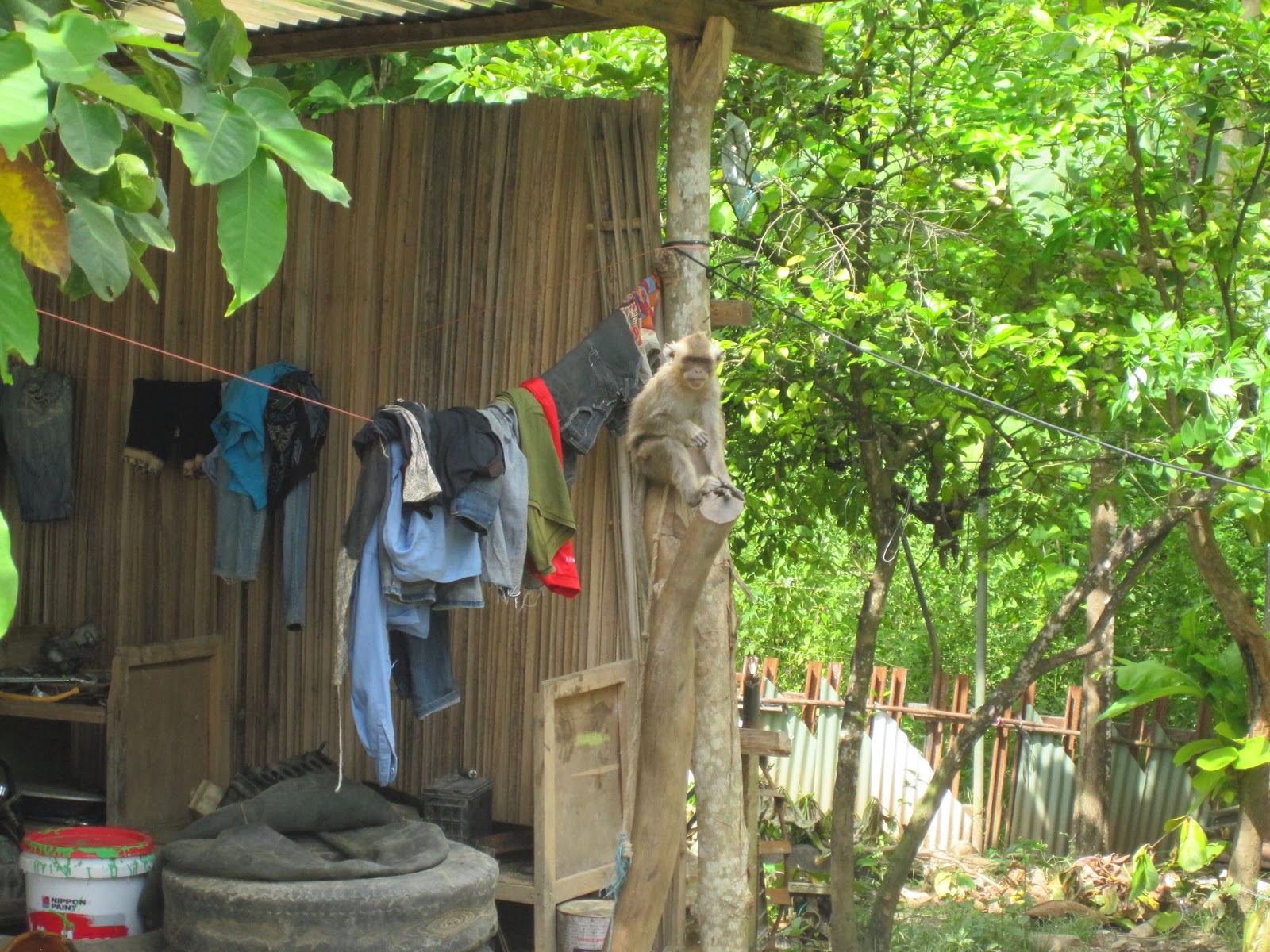We set off to the
west and then south to the country's thirds most populous city, Maliana. This is Eugenio's home town and he already
has an inside track on a site. He is
gracious enough to drive his own vehicle.
We also bring an IPG staff member, Bela.
She was educated in Indonesia, and will be working with us throughout
the project. We set out to the west
along the coastline along similar conditions to what I describe in a previous
post. There is one exception: a ~10 km
section of road that is perfectly smooth, complete with signage and road
markings. It feels out of place, but is
hopefully and indication of things to come for Timor Leste. This is the main road connecting Dili to the
Indonesian portion of Timor.
 |
| The route from Dili to Maliana. |
We stop along the way for some lunch. This is the first time I tested my western stomach against truly local food. All previous meals have been born out of supermarket food, the hotel I am staying at, and a few restaurants. We first bought some steamed corn cobs. The kernels are sparse, there are divisions between the rows, and the flavor is mildly sweet and starchy. I couldn't help but think that this is as far removed from GMO corn that we see in the states as possible. Maybe I am over-analyzing it, but since I have been with my Wisconsin-born wife, I have a better appreciation for corn!
That was just a starter...we stopped in at a hut on the side of the road. Lunch consisted of two items, rice soaked with coconut juice all wrapped in a matrix of coconut leaves and barbequed fish that was caught in the morning. Completely simple, but full of delicious goodness. I was hesitant since both of these treats were no longer warm, but I figured it was time to roll the dice. As I write this (~40 hours later), I can say that my system seems to be fine. Progress! I most certainly took in some new members to the gastrointestinal system.
 |
| Delicious. |
 |
| A view of the beach from this lunch spot. |
We moved on along the coast to the west and headed south when the road met the border of Indonesia. The traverse inland is quite rugged, and stretches across the Bobonaro complex, and group of limestone rocks that are quite susceptible to landsliding. Fortunately, being from northern California, I am accustomed to failing slopes and broken roads - so, no problem. Except that in Timor Leste, there is not a major world economy to rebuild...
We arrived in Maliana to take in the impressive landscape. Most of the city is build upon a vast sedimentary plain that was constructed along the confluence of two large river systems. To the east and south, this plain gives way to an impressive topographic rise - not a surprise given the active tectonic character of the entire island! This is why we are here. Eugenio phones in his two contacts for possible site locations and we visit both. The first is at a local health clinic, but doesn't work because it is out in the sediment plain and I suspect that this site is also susceptible to flooding. This is a good opportunity to discuss with Eugenio and Bela the problem with installing a seismic station on a thick sedimentary formation; it doesn't allow the transmission of the complete seismic signal of an earthquake.
 |
| A view from a rice paddy in Maliana looking at a 1200 m rise to the surrounding mountains. |
On to the next site, the district Administrator building. Eugenio is close friends with the deputy administrator, and we already are in. The site is not perfect as it is still within the sediment plain - but because it is on the edge of the plain, I judge that it will work. Most importantly, it will be a safe location for our equipment.
 |
| The Maliana Admin complex. The site will go in along the back wall in the distance. |
Before we headed back to Dili, we stopped in a Eugenio's family home. This is where he grew up and lived until he left for his education. His father runs a construction company, something that I have in common with him. More interestingly, his father was the King of the region earlier in life, taking over as King from Eugenio's grandfather. That system gave way to Indonesian authority in the 1960s...what a great story! I was honored to be the first American to visit.
 |
| A pet monkey. |
 |
| Two pet raptors to keep the monkey company. |
The return trip was another dose of road peril, but highlighted by an beautiful view of the sunset along the northern coast. I continue to be entertained by being in the southern hemisphere - the sun and moon traverse the northern sky. Really though, being near the equator, the sun traverses overhead. When it sets over the humid Savu Sea, it produces a spectacular sunset. There will be many more of these moments to come.
 |
| The beginning of a spectacular show. |
No comments:
Post a Comment
Note: Only a member of this blog may post a comment.